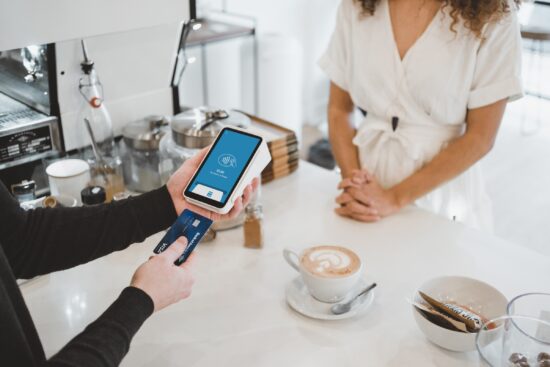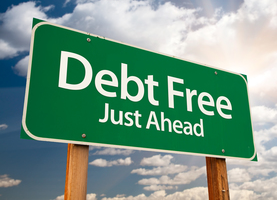by Jenny Smedra
Having to replace your credit cards can be a huge hassle, especially if you have multiple cards. However, it is a necessary security precaution when they are lost or stolen. In the digital age, you need to protect your personal information against fraud and identity theft. While the credit card replacement process is usually painless, I wasn’t so lucky this time. Unfortunately, I played the waiting game and got the phone tag runaround during my efforts to keep my information safe.

Why I Needed a New Credit Card
Although I have had credit cards stolen in the past, this time I had a different reason for reissuing my cards. I recently went through a breakup, so this was an important step to separate our finances. Even though he returned the card to me, having a new card number made it a cleaner break. It also provided further assurance that I would not be responsible if my ex made charges post-breakup.
I soon returned home and rarely used the card. But, I still closely monitored the account to stay on top of my budget. About a month ago, I started receiving foreign charges even though I had both cards in my possession. Since I felt my personal information was at risk, I wanted to protect myself.
Get your FREE trial of the Best Budgeting App, Simplifi by Quicken
The Credit Card Replacement Process
This was not my first time going through the credit card replacement process. I had my card stolen a few years ago during a trip to Vietnam, and had no trouble with the credit card replacement. The credit card company even express shipped the card to a foreign address so I was not stranded. Dealing with them was the simplest part of my ordeal.
First, I contacted my credit card company to issue a replacement card. I logged into my account and we searched the card’s history to look for suspicious charges. Fortunately, there was only a single foreign transaction for less than $10. However, I still thought it best to issue a new card. After a pleasant conversation, I was off the phone and feeling more confident and secure. They said it would take 5-7 business days, but maybe longer due to the holiday.
The first minor annoyance was that I had to wait nearly two weeks for the new card to arrive. Until then, the account remained frozen until I could activate the new one. Once it arrived, I called right away. As my luck continued, the system would not process it. So, the automated system routed me to a customer service rep and put me on hold. I waited even longer and repeated the entire process again. The good news was that by the end of the call, my account was reopened and ready for use. Now, the last task was to update the credit card information for all my automated monthly payments.
Credit Card Security Issues
Updating my automated payments was the most frustrating aspect of the credit card replacement process. The first call was about my monthly cell phone bill. Unfortunately, my mobile provider, AT&T, experienced increased call volume at this precise moment. Services nationwide we disrupted due to the incident in Nashville on Christmas morning. I finally got through to a real person only to find out they would not accept card numbers over the phone. After a few more calls to local stores, I was able to pay my bill without penalty.
I easily changed the remaining payments online with little trouble. The last and most concerning issuing was with my streaming service. It disconcerted me that when I called, they already had the number on file! I even questioned whether I should call and get another replacement card. It worries me that my information may be accessible to others online. Rather than going through this whole ordeal again right away, I decided to continue watching the card’s activity and monitor all charges. If there is anything unusual, I will likely repeat this all again.
Ways to Protect Your Credit Card
What the credit card replacement process taught me is how important is to protect your personal information online. Scammers have been making money off credit card scams for years. These five tips have helped keep me safe over the years.
- Don’t share your PIN, passwords, or answers to your security questions. This includes posting photos of your card online. You never know who is watching your social media, or how they might use your information.
- Avoid storing your credit card information in your devices or online. Even though it is convenient, it leaves you vulnerable. Hackers can access your sensitive information through weak spots in the operating system and steal data with mirroring software.
- Choose new passwords instead of reusing old ones over again. While it may be difficult to remember them all, create different passwords that use a combination of letters, numbers, and symbols.
- Monitor your credit card activity using online banking. Accessing your accounts is easier than ever. You can even install your bank’s app on your phone to make it more convenient. Just be sure to always lock your phone and protect your passwords.
- If your card is lost or stolen, report it immediately. Be sure to also report any suspicious activity and flag unauthorized charges. After you notify your credit card company, the account will be frozen. Most companies will compensate any charges you did not make.
The Takeaway Lessons
I learned a few valuable lessons during this process. First and foremost, your information is never as safe as you think. We could all probably make more concerted efforts to secure our private information. Secondly, I also realized just how connected and dependent we are upon technology. In most instances, these devices and systems make our lives easier and save time. However, when things do not work as they should, be prepared to wait while they figure it out.
Lastly, I learned an incredible amount of patience dealing with each customer service rep. Patience truly is a virtue, and can also prevent more stress when dealing with financial issues. Staying calm helped me find solutions faster meaning I spent less time on the phone. Inconveniences arise, but a little patience can diffuse even the tensest situations.
Read More
- When Should You Close a Credit Card Account?
- How To Decide Which Credit Card Is Best For Your Situation
- Credit Card Debt Chart

Jenny Smedra is an avid world traveler, ESL teacher, former archaeologist, and freelance writer. Choosing a life abroad had strengthened her commitment to finding ways to bring people together across language and cultural barriers. While most of her time is dedicated to either working with children, she also enjoys good friends, good food, and new adventures.





So, what do you think ?